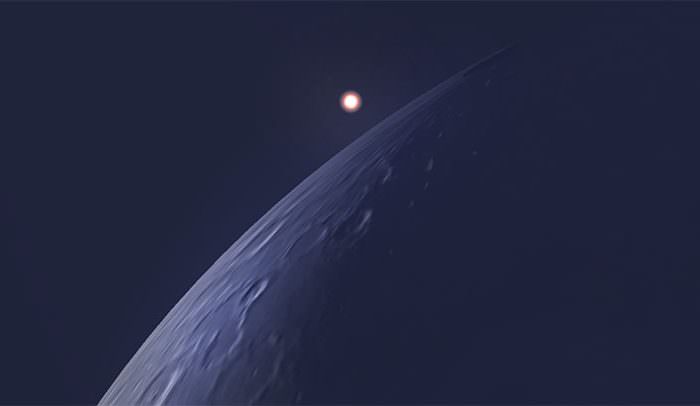See a Wonderful Aldebaran Occultation with a Spectacular Twist

We’re in for a celestial show from two of the sky’s glitterati this week. On Friday morning July 29 around 10:00 UT (5 a.m. CDT), the crescent Moon will occult the star Aldebaran from the eastern and southern U.S. south of a line from Toledo, Ohio through St. Louis, Tulsa and El Paso, Texas. North of that line, the Moon will slide just south of the star in a spectacular conjunction. But the real action lies within a half-mile of either side of the line, where lucky observers will see a grazing occultation.
As the Moon’s orbital motion carries it eastward at the rate of one lunar diameter per hour, Aldebaran will appear to approach the sunlit northern cusp and then scrape along the Moon’s northern limb. You’ll need binoculars or a small telescope to see the initial approach, but once star reaches the semi-dark, earthlit portion of the Moon, the graze will be visible with the naked eye.
The edge or limb of the Moon appears smooth to the eye, but it’s rife with polar mountain peaks. As Aldebaran creeps along the craggy limb, it will repeatedly flash in and out of view as peaks and cliffs momentarily block it from sight. And here’s the truly amazing thing. Observers along the western section of the graze line, where the event takes place in fairly dark sky, can watch the star blink in and out of view without optical aid when it reaches the dark part of the lunar disk. Wow!
Aldebaran is no small star. An orange giant 67 light years from Earth, it’s 44 times the diameter of the Sun. That means that sometimes only a part of the star at a time will covered at a time in some cases, so the length of the flashes will vary. According to David Dunham, president of the International Occultation Timing Association (IOTA), Aldebaran will disappear for one-tenth of a second up to a second as the Moon rolls east, allowing some observers to sense the size of the star. Wow x 100!
Skywatchers further east along the graze line and in other areas where the occultation / conjunction takes place after sunrise shouldn’t pass up the chance to see the event. During last October’s occultation of Aldebaran, I was able to see and photograph the star in my 10-inch scope in daylight no problem. The moon will be closer to the Sun this time around, but give it try anyway. This is the best grazing occultation of Aldebaran visible from North America in the current 4-year series.
For the many who live either north or south of the graze line, the views will still be fantastic. You’ll either see an occultation and subsequent reappearance of the star at the dark limb … or a fine conjunction. The forecast looks good for my city, so I plan on heading out to watch an orange giant meet the skinny Moon. I wish you clear skies and happy shooting!
For more information about the event including detailed weather forecasts and grazing maps, check out the IOTA’s public announcement page. Click here for Universal Times for the disappearance and reappearance of the star for over 1,000 cities.
The post See a Wonderful Aldebaran Occultation with a Spectacular Twist appeared first on Universe Today.
